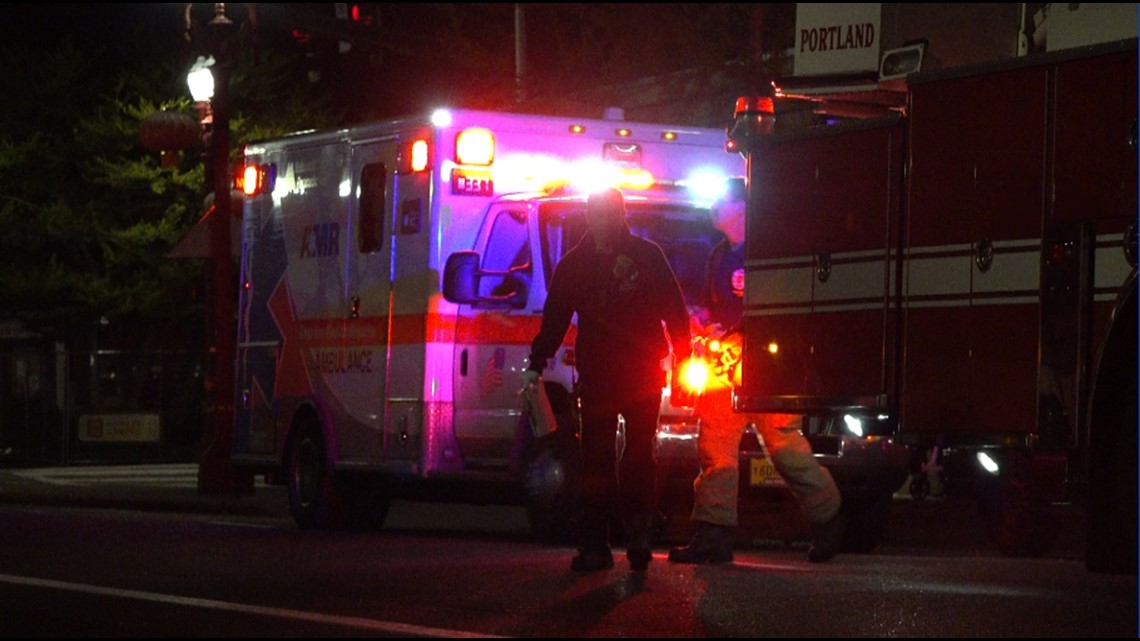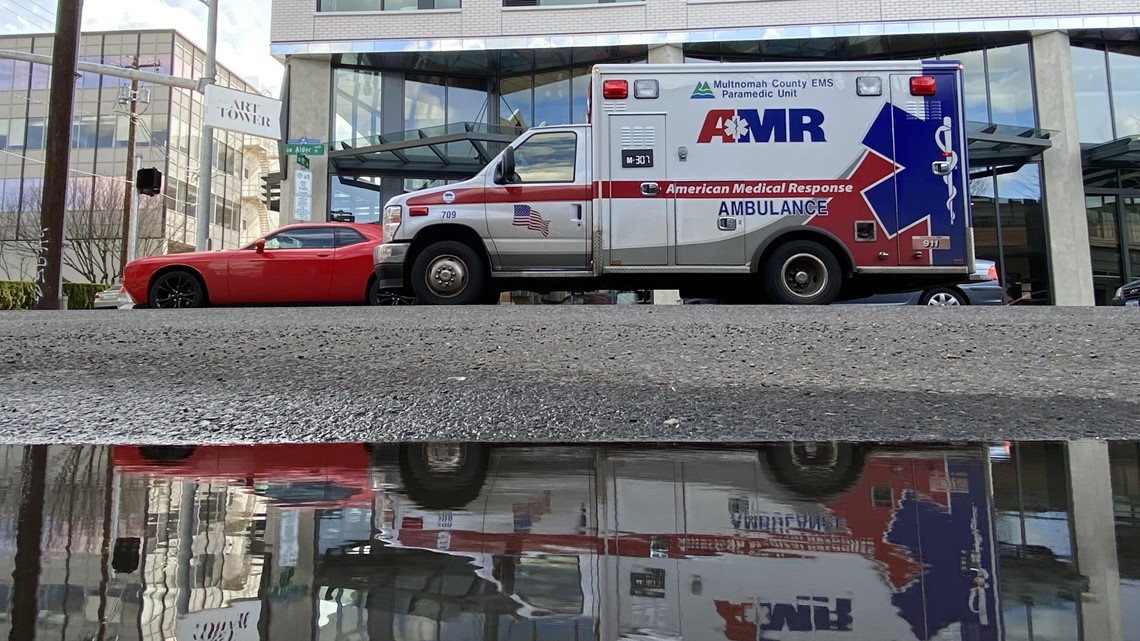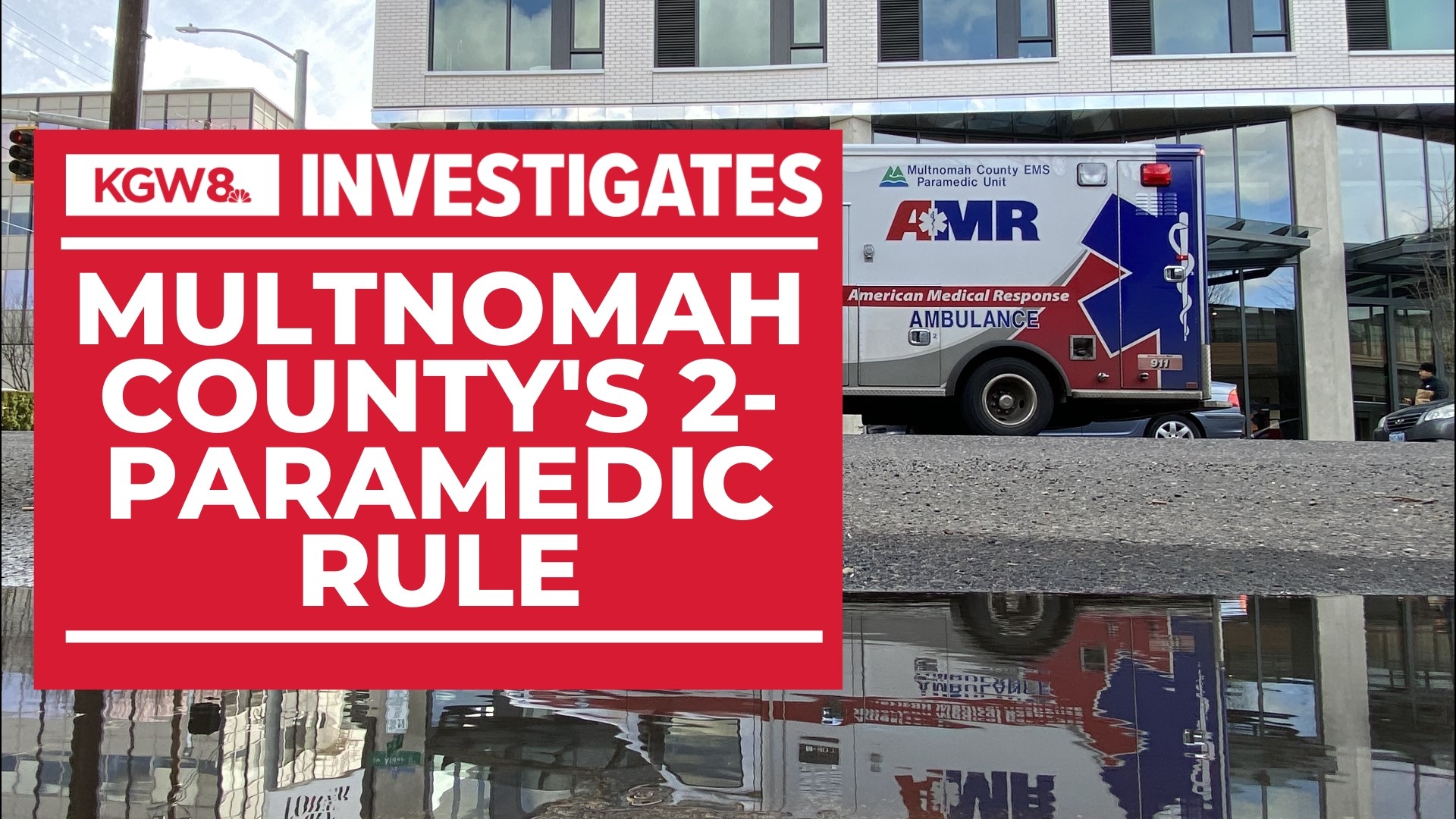PORTLAND, Ore. — Shelby Petersen, a paramedic for American Medical Response in Multnomah County, specifically sought out a job working on ambulances in Portland.
Unlike most places in Oregon, Multnomah County requires ambulances to be staffed by two highly-trained paramedics.
"That's why I came here, that's why I want to work here," Petersen said. "It's what brought me to this county and it's something that I would be very upset to see go."
In an interview with KGW, Petersen said she believes a 2-paramedic crew provides better medical care and is more efficient than a crew of one paramedic and another first responder.
Despite her praise, the 2-paramedic requirement has also been blamed for the county's problems in emergency response.
With staffing shortages, emergency medical service crews are frequently failing to get to emergencies on time, and the questions of how to staff an ambulance is a source of tension between Multnomah County and its EMS provider, AMR.
The Multnomah County standard
In the world of emergency medical services, each county or city plays by its own rules.
Ambulances are staffed with some combination of paramedics, emergency medical technicians or EMTs, or other licensed first responders.
Paramedics are the most highly qualified of the bunch, with additional educational and training requirements. Multnomah County requires two paramedics for each ambulance crew.
Dr. John Jui, Multnomah County’s EMS medical director, swears by the 2-paramedic system.
"That requirement has not changed since I started in 1995 as county medical director, and I wouldn't recommend changing it right now," Jui said.
Jui, who advises county leaders on EMS decisions, said the current system is designed to respond to Multnomah County's elevated levels of high-acuity patients.
"I can tell you if I have two trained paramedics — with you having a cardiac arrest, they're going to do a better job than one medic, guaranteed," he said.
In a field where 911 response times are closely tracked and seconds can make the difference, Jui won't budge.
"We're not going to degrade any of our services just because we have a staffing problem," Jui said.


AMR vs. Multnomah County
In its annual report to Multnomah County, AMR operations manager Robert McDonald said that the county should lower its standards and relax the 2-paramedic requirement because the pool of paramedics is "critically scant."
McDonald wrote that AMR is also asking Oregon lawmakers to "lower the college degree requirement" for paramedics.
After KGW reported in March about lagging 911 response times in both Multnomah and Washington counties, investigative reporter Evan Watson received anonymous messages from people who claimed to work at AMR.
One said that staffing issues could be solved in a month or two if the county switched to a system with one paramedic and one EMT per ambulance, a more common combination. The source said to "imagine the frustration" of AMR leadership.
AMR, a subsidiary of Global Medical Response which employs close to 38,000 people nationally, declined KGW's interview request.
However, a GMR spokesperson responded with a statement:
"The information provided by your source is correct. Moving to a standard EMT/Paramedic staffing model would quickly solve the staffing challenges faced by AMR Multnomah County, thereby improving ambulance response times."
The GMR spokesperson added that AMR officials are "working with the Board of County Commissioners to discuss possible changes to staffing requirements."
However, when asked about this response, a county spokesperson said that's not the case — that Jui has the authority to set staffing standards.
"Multnomah County does not intend to change its staffing standard for frontline ambulances," the spokesperson wrote. "Two well-trained paramedics are always better prepared, less stressed and experience less fatigue and burn out than one paramedic working alone."
Paramedic and industry perspectives
Tim Mollman, a paramedic with AMR Multnomah County, said the current system creates better paramedics, and he'd look at leaving if the county changes its requirements.
“Our communities are best served with two paramedics, honestly, because when we have a critical call, there's two of us that are there able to communicate with each other," Mollman said. "One of us might miss something, and having another person having your back is really is key to public safety."
From his perspective, two responders with the same level of training are needed to handle the emergency situations he sees each day in Portland.
"I'm not trying to knock EMT-basics at all," he said. "They're fantastic at what they're designed for. I just feel like sometimes when we're getting into the higher-acuity calls we need more people with higher training.”
Multnomah County’s 2-paramedic requirement is unique in Oregon and increasingly rare when compared to other cities across the country.
"That's not as common now just because there's such a shortage," said Thomas Moore, a junior partner at Fitch and Associates, an EMS consulting company.
Moore said paramedic requirements are entirely location dependent, and he doesn't have data that proves two paramedics provide superior medical care.
"I'm not aware of any study or assessment that (shows) that having two paramedics is, say, better than having one paramedic," Moore said.
With a nationwide shortage of EMS providers and as cities and counties lower their standards, Moore said there’s another clear reason ambulance providers would want to make that move after struggling to hire and retain paramedics.
"Candidly, it costs more to put two paramedics on an apparatus than to have on EMT and one paramedic," he said.
AMR’s collective bargaining agreement with local unions sets the maximum pay for experienced EMTs at around $61,000, while paramedics with that same experience would make $101,000.
Petersen said she sees why AMR would want to make the change.
"I do think changing the requirement would provide a short and fast increase to the number of ambulances on the road," she said. "However, all that would do is increase my workload as a paramedic because I would have to write more charts, I'd have to do more of the patient care, and that's going to push us towards burnout more."


A potential solution?
Multnomah County and AMR have agreed to a compromise, of sorts.
Starting this spring, AMR will staff Basic Life Support teams — which are EMT crews with no paramedics — to respond to minor situations.
Dispatchers will learn how to triage each 911 call, and eventually these BLS crews will transport patients on their own, reducing the workload for paramedics and potentially helping with staffing challenges.
"About 30% of our calls don't require a paramedic to be there, and we have devised a scheme to actually fulfill that portion here without a paramedic and basically increase the workforce as a temporary measure until we can stabilize the workforce," Jui said.
Cities like Seattle and San Francisco already use similar EMS setups.
In AMR's annual report to the county, McDonald wrote that the BLS division would "allow AMR Multnomah County the ability to cast a much wider net for certified providers to bolster our ranks, without impacting patient outcomes."
Jui said BLS crews would initially respond alongside 2-paramedic crews as the county and AMR work out how best to manage the new EMS setup, before potentially responding to certain 911 calls on their own.
Meanwhile, Petersen said she knows lagging response times are alarming, but she still believes the benefits of a 2-paramedic model carry more weight.
“Less of us are going to stick around long term if that requirement goes away," she said.

